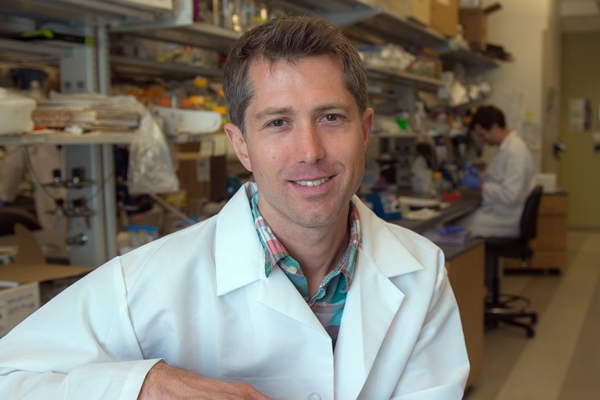7 April 2017. A bioengineering team at Rice University developed a genetically modified form of bacteria that in lab mice detects inflammatory diseases in the gut. Researchers from the lab of bioengineering professor Jeffrey Tabor published their findings on 3 April in the journal Molecular Systems Biology.
Tabor and colleagues — from Rice, Baylor University medical school, and hospitals in Houston — are seeking to expand the tools available for harnessing microbes to diagnose and eventually treat diseases that can be traced to signals in the gut. Obesity and inflammation in the gut, and even some cancers and depression, are among the disorders associated with changes in the gut’s bacteria. But because of their density and complexity, these microbial communities are difficult to study, and reliable lab models are not yet available.
In a Rice University statement, Tabor says that gut microbes themselves have properties that can help solve some of these puzzles, noting, “bacteria have evolved tens of thousands of genetically encoded sensors, many of which sense gut-linked molecules. Thus, genetically engineered sensor bacteria have tremendous potential for studying gut pathways and diagnosing gut diseases.”
Tabor’s lab studies bacterial sensors, taking a programming approach much like electrical engineers to configure complex systems from bacteria that respond to signals. In this project, the lab focused on signals reflecting changes in gut microbes indicating inflammatory bowel disease, a condition that includes Crohn’s disease and ulcerative colitis. These disorders, which affect as many as 1.3 million Americans and may be due to malfunctions in the immune system, can cause severe diarrhea, pain, fatigue, and weight loss.
The sensors in this case were designed to detect signals from biomarkers, or molecular indicators, of inflammatory bowel disease, particularly sulfuric compounds such as thiosulfate, where elevated levels are associated with the disorder. Postdoctoral researcher and first author Kristina Daeffler says, “It has been difficult for scientists to study this link because there aren’t tools for reliably measuring thiosulfate in living animals. Our first goal in this project was to engineer such a tool.”
The team started with Escherichia coli or E. coli bacteria, a well-researched organism where methods for producing fluorescent green proteins are already known. Lab colleague Ravi Sheth, through a computer analysis, identified properties of Shewanella, a marine bacteria that lives off decomposing organic matter, that suggest the organism has an affinity for sulfur compounds, such as thiosulfate.
In a process the lab says took about a year, the team engineered a probiotic strain of E. coli bacteria to add genes from Shewanella that respond to the presence of thiosulfate and similar substances. The genetic engineering task included the addition of genes expressing green fluorescent proteins, and connecting the genes to function like a sensor.
The researchers tested the engineered E. coli bacteria in lab mice induced with colitis, and a similar set of healthy mice for comparison. The team fed engineered bacteria to the mice, and the feces of the animals were then analyzed for the fluorescing proteins with a standard flow cytometer, a lab device using lasers to measure fluorescence. The results indicate mice induced with colitis produced feces with the green fluorescing proteins, while the healthy mice did not, suggesting the presence of compounds like thiosulfate. Also, the amount of fluorescence measured by the flow cytometer increased with the extent of inflammation in the mice.
The authors believe the technology can be translated into new types of diagnostics or therapeutics involving gut bacteria, and not just for inflammatory bowel disease. Tabor says that individuals could test for gut diseases at home with yogurt-like foods that react with particular colors in the stools if inflammation is present, saving on doctor visits and invasive procedures, such as colonoscopies. Rice University filed for a patent on the technology adapting thiosulfates as biosensors to detect or treat gut inflammation.
More from Science & Enterprise:
- Diet Enhancing Gut Microbes Shown to Slow Type 1 Diabetes
- Company Launches to Discover Gut-Brain Therapies
- Therapeutic Food-Triggered Gut Microbes in Development
- Grant Funding Study of Gut Microbe Protection Drug
- C. Difficile Infection Tested with Synthetic Gut Microbe
* * *


 RSS - Posts
RSS - Posts
You must be logged in to post a comment.